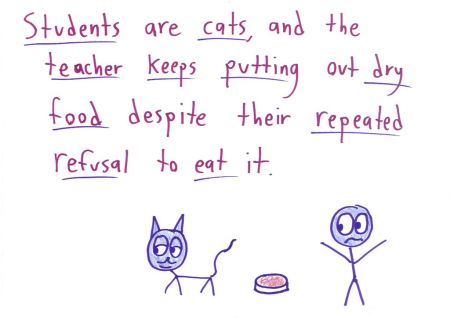Which comes first: the what, the why, or the how?
Learning happens all the time. I just finished watching the Netflix documentary Making a Murderer. During the show and even after, I asked my friends and family questions, looked up information online, and just wanted to know as much as I could about the legal system and the specific case in the documentary. And I learned a lot. The show sparked my interest, I connected with others, and we all shared in the learning experience. This type of learning is part of the idea of connected learning.
Connected learning is the idea that learning thrives when a person’s interests are engaged in an environment where students work with their peers towards a shared purpose which can then lead to academic success. I love the idea that students can explore their interests and work with their friends and peers to actively engage in learning. But how does the learning connect to academic subjects and lead to academic success? And what does academic success look like in these environments?
In addition to rethinking the learning environments in academic settings, we should also reconsider how students can demonstrate their learning. Connected learning reexamines how students learn, but we can’t forget about what students learn. Considering what students learn, why they should learn it, and how they should learn it should be an iterative process that is always ongoing. And learning outcomes can be helpful with the what students learn and why. Learning outcomes don’t have to be restrictive; they can guide learning and specify a destination without specifying how that destination is reached. But then how do we know if students reach that destination?
For example, one student outcome for all undergraduate engineering students is the ability to function on interdisciplinary teams (for more info, click here). This outcome does not specify how students must demonstrate this or even what exactly it means to “function” on a team. It is an end goal and is up to educators and those in charge of the curriculum to interpret. This learning outcome can be addressed in connected learning environments where students work in teams to solve problems of interest to them. What we need to change is how we assess students. Instead of traditional multiple choice tests, we can use projects and presentations and student reflections to assess students on the teamwork learning outcome.
Connected learning environments can provide students with unique and meaningful learning environments. When rethinking the learning experiences students have, we should also reconsider how students can demonstrate that learning. Both educators and students should have a general idea of where we are trying to go (the what) and why we are trying to get there. Student outcomes can still be the destination, but the journey may be different with connected learning.
